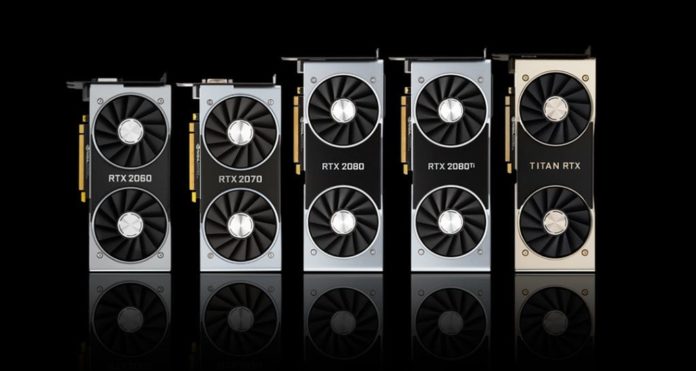NVIDIA suffered a 45 percent year-over-year loss in gaming GPU revenue, according to the Q4 and fiscal 2019 earnings it released this week.
The company still performed better than expected as it had lowered its earnings projections last month. The Q4 earnings of $2.21 billion exceeded the expected value and led to an increase in the share price in after-hours trading. NVIDIA enjoyed a 21 percent gain in full fiscal year revenue.

Metro Exodus: Turing’s Shader Engine Propels the RTX 2080 ahead of the 1080 Ti
The revenue drop in gaming was blamed on several factors by NVIDIA, one of them is the underwhelming sales of its Turing based RTX 2070 and RTX 2080 graphics cards. The company had expected way better numbers from the new cards based on its new Turing Architecture. The reasons users might have refrained from purchasing these RTX GPUs could be the lack of enough actual games where Ray Tracing can be used, and how expensive these cards are.

CEO Jensen Huang also said that for the first time in company’s history, its latest architecture launched with only high-end models. The RTX 2070 and RTX 2080 initially only had high-end and overclocked models available that cost way above the MSRP, it took a while for the lower-priced models to actually reach the market.
NVIDIA had to delay the release of its more mainstream RTX GPU, the RTX 2060 because of the abundance of GTX 1060 cards in the supply channel. This was because of the downfall of the crypto currency market. Huang said, “The inability to launch [the] 2060 was a big inhibitor for us, but we did so at CES.” The company is still reducing its shipments so that it can sell off its excess inventory. NVIDIA expects the supply channel to stabilize by the end of first quarter.

NVIDIA is quite hopeful for its RTX cards and its ray tracing capabilities as more games have started supporting the tech, and the number is only going to grow. Unreal Engine and Unity game engines are also going to start supporting ray tracing in the near future, which is good news for NVIDIA.
AMD released its own graphics cards based on 7nm manufacturing node like the Radeon VII to compete against NVIDIA in the high-end gaming GPU and the data center segment. But CEO Huang said that “we don’t see them” in competition for high-performance computing and deep learning sales. Huang’s statement is quite interesting considering AMD reported a 23 percent annual revenue growth with stock prices rising and solid projections for 2019.

NVIDIA’s gaming, data center, professional graphics cards, and automotive applications are predicted to grow over the course of this year. Data Center revenues were down by 14 percent this quarter, but still managed 12 percent growth year-over-year.
The 45 percent year-over-year decline in the gaming revenue should be quite worrying for NVIDIA considering it is worth 43 percent of its total revenue. The company suffered a 20 percent decline on the $1.98 billion revenue it generates from GPUs, mostly because of the plummeting sales of gaming GPUs.
Further Reading:
- NVIDIA GeForce GTX 1660 Ti Benchmarks Leaked, Performance At Par With TITAN X
- Intel reveals 9th Gen Core H-Series CPU specifications
- Intel Core i9-9900KFC CPU Listed: For them Chicken Dinners
- AMD Ryzen 3000 CPUs and Radeon Navi 7nm GPUs to Launch on 7th July


